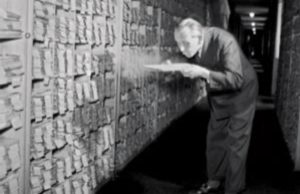
Don’t let your plans gather dust. If you do, you burn public trust which is the most valuable currency.
It happened a long time ago, so I guess it’s safe to tell the story.
Your Guide To The Delray Beach Boca Raton Lifestyle
Watch as Jeff and Dave, the founders of YourDelrayBoca.com, give you their take on the local real estate market:
There is no more dynamic real estate market in the U.S. than Boca-Delray.
From oceanfront mansions and historic homes to picturesque country clubs and subdivisions the market is vibrant, the choices are endless and the neighborhoods varied depending on age range, price and taste. The area features everything from old Florida to the most modern downtown condo’s and townhomes.
You are sure to find exactly what you want in these two world-class cities.
Buying or selling in the Delray-Boca area and need a recommendation? We can help. Learn more here.

Don’t let your plans gather dust. If you do, you burn public trust which is the most valuable currency.
It happened a long time ago, so I guess it’s safe to tell the story.
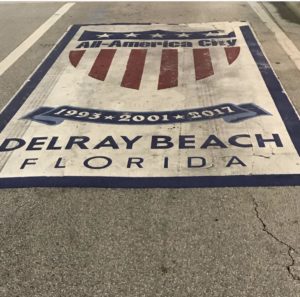
I moved to Delray Beach just when efforts to revitalize the city were beginning to kick into gear.
But I was there for Visions 2000, the Decade of Excellence, Visions 2005, Sharing for Excellence (which focused on the city’s schools) the Downtown Master Plan and a host of other efforts that created modern day Delray Beach, a three time All America City, that has earned national acclaim for its redevelopment efforts, successful downtown, events, culture and food scene.
Delray came back as a result of careful planning, massive public investment, risky private investment and a playbook that included everything from a downtown tennis stadium and festivals to a focus on culture and a big bet on food and beverage as a driver of commerce and branding. A strong commitment to Community Policing was another indispensable tool. If people don’t feel safe, they simply won’t spend time or money in your city.
But short term it may be a while before we see restaurants packed and feel comfortable enough to attend festivals with thousands of people.
We never quite had a huge office component downtown and one wonders where that sector will be in the wake of the coronavirus. Many companies are realizing they can effectively operate remotely and may not require the large offices they now occupy.
I also think there is a great opportunity to introduce educational uses downtown and perhaps someday (post vaccine) that will be possible too.
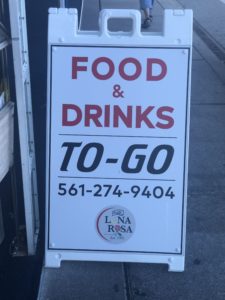
But when this crisis passes, will we care about where these workers live? Will we show concern for their health care needs and whether they have a path to a life of stability?
Like many of you, we’ve been keeping in touch with family, friends and work colleagues via Zoom these days.
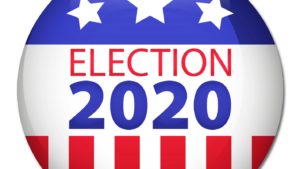
“I believe we will soon see leaders using the language of reconciliation, of healing and unifying. Perhaps the noise of the present has been drowning out the voice of reason—the voice of the future that is still there.” —Frances Hesselbein, chair of the Hesselbein Leadership Forum at the University of Pittsburgh and former CEO of the Girl Scouts of the USA.
I admire Frances Hesselbein.
I read her leadership themed email every day.
She is optimistic.
Leadership by definition is optimistic.
We have been missing the voice of the future for a long time in our community and that absence has created a tremendous amount of damage. When you stop focusing on the future it passes you by. You tend to get bogged down in the mundane daily battles that blur with time and don’t add up to anything productive.
It’s the day after the Delray Beach municipal election—another bruiser that did little to elevate the conversation around town and a lot to take us further down the “hey, let’s continue to hate each other” rabbit hole that simply does not work.
So let’s congratulate Vice Mayor Shirley Johnson and newcomer Juli Casale on their victories and hope that in the midst of a huge national crisis, we are able to come together in Delray.
But before we move on and the election fades from our memories, we should do a brief post-mortem.
So what did we “learn” over the past two plus months of intense campaigning?
Here’s a brief primer in case you might have gone numb.
Election Narrative: All developers and all development is Bad—It doesn’t matter what the project is, it’s all no good. Developers are rapacious, corrupting criminals and somehow we’d be so much better off without them.
Reality: Without investment we’re dead.
Healthy cities need to grow their tax base. Healthy cities need to create jobs and they need to offer housing especially attainable housing so that families and young people have a way of becoming part of our community. We need good development, smart growth, attractive design and policies that promote economic and environmental sustainability. We didn’t get that discussion in this election cycle or in past cycles either to be fair. And until we have that conversation as a community, we are doomed to keep slinging a lot of lies and innuendo at each other. How sad for us. How unproductive. We need to do better and we can do better.
Election Narrative: Business interests— but especially developers —are a “special interest” and therefore not worthy of participating in our local elections.
They shouldn’t make a donation to a candidate who they think might be good for Delray; they can however continue to pay taxes and shut their mouths when it comes to endless approval processes and endless insults relating to the damage they are allegedly doing.
So it doesn’t matter that maybe you hope to exercise your property rights or whether you are following the city’s codes or acting on a vision…. say to jump start the Congress Avenue corridor or create a job or provide a home for a young family. The message is clear: how dare you. I’ve met a slew of developers over the years. Some were terrible. I mean lock the doors, check your wallets and take a shower after meeting them bad. And some were terrific.
Reality: In my experience, the good ones don’t want to buy anyone and would never do so. That’s one of the reasons they’re good. They believe in their projects and their vision and are willing to take risks to make things happen.
They don’t mind tough standards as long as the playing field is level and the process is not endless. Candidates often decry “developer money” flowing to their opponents, but why would developers support candidates who base their campaigns on stopping development? Not bad development, all development.
Election Narrative: Endorsements are worthless and reflect poorly on the candidate who receives them.
So if the police and fire union endorses you, it’s only because they want bigger pensions and higher salaries. It can’t be because you have been supportive of police and fire or they think you’d best serve the people of the community they are sworn to serve and protect.
Reality: Never mind the fact that in the last contract negotiation they agreed to give up benefits. Never let the facts get in the way of a good mail piece.
Let’s pretend that it makes sense to portray our police officers and firefighters as mercenaries. Hey I get it, unions and all. But, I’ve known two-plus generations of officers and firefighters; they care about Delray and will do what’s right for the city when it comes to crunch time. If you think the best way to “deal” with them is confrontation you are wrong.
Election Narrative: Challenger vs. Corrupt Establishment
We can’t discuss issues in any kind of depth because we get caught in the endless spiral of attacks and counter-attacks.
So here’s how it goes: Challenger (usually inexperienced with little in the way of a civic resume takes on “establishment” candidate (which is code word for someone who has spent at least a few years working in the community or serving in office).
Challenger attacks record, character and integrity of their opponent. Opponent feels compelled to strike back and call the challenger inexperienced, a bully and a liar. And so it goes down into the gutter.
To be fair, in this particular cycle, several of the challenger candidates ran very positive campaigns—a few didn’t. All are to be commended for running because it’s a huge commitment. I hope commissioners seek to put several of the candidates on boards where they can get experience and learn more about the city they seek to lead.
There’s a lot more to discuss. Campaign finance reform, an apparent disconnect between the stated level of spending and the amount of mail we receive, the divisions in our city. Especially the divisions and the need to move past issues once they are decided.
The re-elected, the newly elected, the incumbents and we the people have an opportunity here to heal those divisions or at least agree to disagree in a more civil manner.
Our first order of business is to make it through the virus—which is sure to change our world and our local community in ways we can’t even begin to fathom yet.
But this too shall pass—and we have a responsibility to each other to find a way forward together.
The election was close—and it was a split decision. Which means there is an opportunity for all “sides” and viewpoints to reach out and be inclusive.
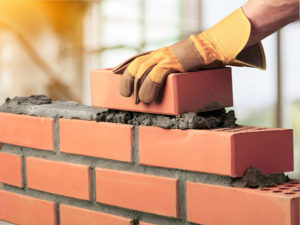
Bricks and mortar is changing retail , but retail is not dying.
We’ve seen the headlines.
Macy’s closing stores.
Bed, Bath and Beyond closing stores.
Forever 21 going bankrupt (but being revamped).
It’s a “retail apocalypse” screams the headlines caused by Amazon and the big bad world of e-commerce.
Yes, the numbers look tough for brick and mortar retailers. More than 9,000 stores closed in 2019 which was more than 2018 and more than 2017—all record years.
Ugh…
But there’s a deeper story here.
My eyes were opened recently after reading a report by University of Chicago economist Austan Goolsbee. And as we plan our local cities and lament the lack of retail in places such as downtown Delray and Boca Raton we need to pay attention to societal trends and adjust our expectations and maybe our codes accordingly.
First, there is no doubt that e-commerce is growing by leaps and bounds. Twenty years ago, about $5 billion worth of goods were purchased each quarter online. Today, that number is about $155 billion per quarter.
But while that’s an impressive number it still represents only 11 percent of the entire retail sales total.
So almost 90 percent of goods are still purchased in a brick and mortar store and of that percentage, more than 70 percent of retail spending in America is in categories that are fairly well insulated from the internet due to the nature of the product or because of laws governing distribution.
These categories include cars, gas, food, beverage, drugs, home improvement and garden supplies.
So what’s going on out there?
Why is it so difficult for physical retailers to make it in the 2020s?
Goolsbee puts forth three societal trends as causes.
The rise of Big Box Stores—super centers and warehouse stores such as Costco actually ring up more sales than Amazon.
Income Inequality—as the middle class has been hollowed out, stores that cater to them have suffered or died. Retailers aiming at the high and low end of the income scale have found some success. So “dollar” stores have grown along with some high end designer retailers while retailers serving the once vast middle class— J.C. Penney and Sears have suffered.
Services Have Grown, Things Have Not—According to Goolsbee, with every passing decade Americans have spent less of their income on things and more on services and experiences. We are spending more on our health, more on restaurants, education, entertainment and business services than we used to and less on products sold in stores.
Here’s a cool stat: In 1920, Americans spent 38 percent of their income on food and 17 percent on clothing—almost all through traditional stores. Today, 10 percent of our income is spent on food and clothing eats up just 2.4 percent of our incomes.
So how does this affect our local communities?
Well, it might explain why Atlantic Avenue has become more of a food and entertainment destination than a traditional downtown where people go to shop for things like clothing and decorations.
The issue becomes more acute when property values sky rocket alongside rents. It’s hard for traditional retailers to pay high rents per square foot, especially since we still have a seasonal economy.
While we all (well some of us) love mixed-use development, it’s challenging to make retail work due to economic and societal trends. Of course, mixed-used does not have to be exclusively housing and retail, it can also include food and beverage, co-working, an educational use or something in the health or fitness space.
I have some very smart friends who have succeeded in real estate and they are having a hard time imagining what will happen to all the retail space we have built in Boca, Delray and Boynton Beach.
We definitely have a need for more housing, especially attainable housing and some of the overbuilt retail space can surely be used to add to our stock.
But that’s going to require some deft planning and a whole lot of political courage/hard work to convince residents who already live here why we need to make room for more people. P.S. if we do want our existing mom and pop retailers and family owned eateries to survive, density cannot be a dirty word. Let’s repeat: density done right is not a dirty word.
There was a time in Delray when density was encouraged in our codes and plans . And guess what?
It brought the town back to life.
Al Gore would call that an inconvenient truth, candidates running for local office would sooner break out in hives than embrace the concept but density designed properly and used strategically can do much to support the mom and pops and independent merchants we say we cherish. It’s also better for the environment than traffic-inducing sprawl like development.
Events too play a role too, by bringing people to town where they might stop and shop or come back to check out stores they might see while attending an arts show or festival.
As the son of an independent pharmacist, I have a deep appreciation for how hard it is to make it in retail and how important good retail is to a vibrant and vital central business district.
As we sift through the barrage of campaign attack ads already hitting our mailboxes and inboxes, it would be useful to see if any candidate offers ideas on how to grow the local economy in a high rent, seasonal environment with tons of competition from nearby cities, without an Office of Economic Development (the two member team resigned and have not been replaced) in a changing world being disrupted by technology and things we can never anticipate such as coronavirus.
It’s not an easy challenge, but real leaders…effective leaders…. ask the questions that matter and focus their communities on issues of substance. Or we can continue to accept vapid statements saying we are against crime, for good schools and against development.
Give me substance over tired canards.
It’s time.
We live in changing and complicated times. We need ideas and leadership.

At 6’11” Reilly Opelka is the tallest player on tour. He’s also the new Delray Beach Open champ.
Things We Loved In February
We know the month is not quite over, but close enough.
Attending the Delray Beach Open.
Nothing like watching world class tennis under the stars on a beautiful February night.
Kudos to Match Point for producing a great event.
The addition of hometown fave Coco Gauff was a master stroke. Coco played an exhibition under the lights against the NCAA champion. Great stuff.
Congratulations to the Bryan Brothers on their record sixth Delray Beach title. The brothers—arguably the best doubles duo ever—come to Delray every year and have been great supporters of the event and the city. They will be retiring so it was great to see them go out with a win.
Also congratulations to Reilly Opelka who battled weather and determined opponents to claim the singles title. He may be someone to watch. He is hard to miss at 6’11” with a serve in the 140 mph range. He has a big future and the Delray event is becoming known as the place that launches stars: i.e. Frances Tiafoe, Kei Nishikori.
Seeing Doris Kearns Goodwin at FAU. She packed them in like a rock star and we could have listened to her for hours and hours. Just a wonderful storyteller.
Having the great and vastly underrated Steve Forbert play The Arts Garage.
A great performer and wonderful songwriter, Forbert is a joy to watch and listen too. Although we were forced to give our seats away, we were told he was great and drew a big crowd. I’ve seen him several times and won’t miss him again if he comes back this way.
Art on the Square—in a word: terrific.
The new Whole Foods on Linton looks great. A most welcome addition.
Another whopper of a real estate deal: Menin Development’s $7.3 million acquisition of Johnnie Brown’s.
That’s not a typo.
February weather. We are reminded why we live here. Crisp mornings, gorgeous days and cool nights. And don’t forget the Florida sunsets.
Black History Month is a good time to learn about some of our local African American icons.
Visit the S.D. Spady Museum for a great primer and see if you can find C. Spencer Pompey’s book “Many Rivers to Cross.”
We wish Pedro Andrade well with his new restaurant Valentina’s Pizza and Pasta on Congress Avenue in Lake Worth Beach.
Pedro did an amazing job serving the community for years at Anthony’s Coal Fired Pizza never turning down a good cause. We plan to visit his new place ASAP.
We had some monumental birthdays in February.
Zack Straghn, a long time civil rights leader, celebrated his 92nd birthday and Bob Levinson, an author, business leader and philanthropist turned 95.
Lots of wisdom and accomplishments between those two gentlemen.
We wish them many more years of making a difference.
We tried Cena on 7th Avenue and it was wonderful.
A great place to spend Valentine’s Day.
I had the pollo parmigiano and it was spectacular. It’s also huge– so we made two meals out of it.
Don’t miss the buttered noodles and the tartufo.
Heartfelt condolences to the Dubin and Evert families on the loss of Jeanne Evert Dubin.
Jeanne was a really nice person and was a terrific tennis player herself during a brief pro career rising to number 28 in the world and top ten in the United States.
She was an owner of Dubin & Associates which manages the Delray Golf Club and Delray Tennis Center.
On a personal note, Jeanne was just a super nice person. She loved tennis, preferring to be on the court teaching or leading tennis leagues. She had a quiet influence.
She will be deeply missed.
We also offer sincere condolences to the pioneering Love family on the loss of Marsha and Barbara Love.
Until next month…..
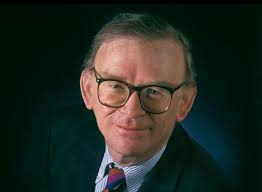
Neal Peirce
Neal Peirce died over the holidays and we shouldn’t let his passing go without a look back at his life and his influence.
Mr. Peirce was a journalist and researcher who studied cities, regions and states—not exactly a sexy beat but an important one because communities change or stagnate on the local level far from the gaze of Cable TV pundits and national media.
As a result, if you were a policymaker in the 80s, 90s and 2000s with a burning desire to make your time in office count, you were most likely aware of Mr. Peirce and influenced by his work.
As an elected official in Delray Beach from 2000-07, I read every word he wrote, subscribed to his column and poured over his reports seeking ideas, insights and wisdom.
He was a hero of mine. And he inspired many other mayors I go to know through the U.S. Conference of Mayors and Florida League of Cities.
In addition to a syndicated column, Mr. Peirce was a partner in a firm called Citistates.
Cities, states and regions would hire the firm to study their communities and make recommendations on how to solve problems or take advantage of opportunities, some of them hidden.
About 20 years ago, business, non-profit and civic leaders in South Florida engaged Citistates in a unique effort that also included major regional newspapers which agreed to publish Mr. Peirce’s “think” pieces so that stakeholders could be educated on some of the opportunities and challenges we faced.
When Mr. Peirce passed during the holidays, I went back and read a few of the old newspaper columns including a wonderful piece on U.S. 1 that included recommendations to turn the auto-oriented highway into more of a neighborhood.
Peirce envisioned U.S. 1 becoming a new “Main Street” linking South Florida from the Treasure Coast to South Dade. He recommended that the Florida Department of Transportation reclassify U.S. 1 as a “local access road”, not a thoroughfare for moving traffic as a rapidly as possible.
“High speed traffic is the job of I-95 and other such arterials,” he wrote.
And he was right.
Delray took that advice and I was a policymaker at the time the decision was made to narrow Federal Highway. It was not an easy or obvious decision and the opposition to the plan was formidable—as were the proponents who wanted to make the road safer (there was a high incidence of accidents) and more picturesque. They argued that it made no sense to have a high speed freeway bisecting a pedestrian oriented downtown. We studied the issue for a year, studying speeds, looking at accident history and traffic volume before ultimately deciding to proceed with the project.
In my mind, it turned U.S. 1 in Delray from a highway into a neighborhood and gave the area a host of economic and placemaking opportunities.
Reading Mr. Peirce’s column on U.S. 1 I have no doubt that his thinking had an effect.
Peirce and his partner Curtis Johnson published a series of articles in 2000 in local newspapers on topics ranging from sustainability and traffic to New Urbanism and the difficulties of getting things done in a sprawling region with a vast variety of governments and players to navigate.
If you want to check out the articles that ran in the Sun-Sentinel and Miami Herald here’s a link. https://www.floridacdc.org/roundtable/index.html
If you read the pieces, you are struck by their continuing relevance and also by what wasn’t done.
Twenty years have gone by and we still haven’t addressed sprawl, environmental issues and affordable housing.
With Mr. Peirce’s passing, I can’t think of another journalist covering the urban beat that measures up. Governing Magazine had the great Otis White some years back and he did two major pieces on Delray Beach but he left the magazine and now that wonderful publication is going away too.
The newspapers that partnered with key non-profits to produce the Citistates project are a shell of their former selves. As a result, we no longer have a regional or community water cooler; a place to share ideas and create momentum for positive change.
Back in 2000, New Urbanism seemed like a logical solution to traffic, sprawl and environmental degradation and a chance to return some charm to what can be a cookie cutter landscape of bland design.
But in 2020, we see the same tired arguments against New Urban style development despite growing traffic and a lack of affordable housing and walkability. I cringe when I get vapid campaign emails from candidates decrying density in one sentence and vowing to save the environment in the next breath. Folks, sprawl like development is not good for the environment. It creates traffic, uses more water and will never create the amount of housing we need to help teachers, police officers and firefighters be able to live in our communities.
All of this may sound like the work of people like Neal Peirce doesn’t matter. That’s not what I believe.
I think crusading journalists and thinkers like Neil Peirce make a difference.
In 2000, Peirce wrote passionately about highway gridlock and the dangers of sprawl. If only we had listened and acted as a region, but I would argue Delray did listen and did act and that we need to continue with smart growth and community engagement practices.
Mr. Peirce had a prescription to address sprawl: utilize planning and community engagement to design a better future. He called for “mega charrettes” to bring the community to the table.
“Consider the 1.8-million-by-2020-population projection (I think he meant additional residents moving in not total population) and debate honestly, openly where the new growth ought to go. Even if a consensus wasn’t reached — and it might not be — the true, region wide issues would be a lot clearer.
How can the emerging technologies, starting with neighborhood planning programs, be made available to ordinary citizens, businesses, people interested in new development possibilities and futures? One solution: walk-in urban design centers in West Palm Beach, Fort Lauderdale and Miami, designed to marry the worlds of professional design and grassroots activism.
Ideally, architecture or planning departments from local universities would run these centers. Information on the whole gamut of planning challenges — from single transit stops or suburban neighborhood centers to growth corridors, waterfronts and affordable housing — would be available.
Such centers are already open and operating in such varied places as Chattanooga, Birmingham, Little Rock and Portland, Ore., with very favorable reports on their performance. For democratized development in South Florida, they might represent a dramatic breakthrough.”
Alas, it didn’t happen. But it’s not too late. Or is it?

Casey Stengel said never make predictions, especially about the future. Sorry, Casey.
Can you believe it’s 2020?
Didn’t it seem like only yesterday when we were sweating Y2K?
Well not only did our computers survive the millennium, they have become ever more ingrained in our lives.
The beginning of a decade is a good time to dream and to take out our imaginary crystal ball.
So here are some predictions and prognostications for the 20s…
Boca Raton:
Boca Raton will continue to flourish driven by the power of FAU and Lynn universities, the growth of the Boca Raton Innovation Campus, the successful execution of the Brightline deal and a refresh of Mizner Park with several new tenants.
Fueled by new investment, the Boca Raton Resort and Club will solidify its place as one of the world’s premier resorts hosting important conferences and attracting titans of industry who will fly into an ever busier Boca Airport.
Boca’s decade will be marked by its strengths in health care, education and technology. It will become known not only for excellent health care, but also for medical research and education.
It’s “A” rated public schools, excellent parks system, great hospital and corporate base will continue to fuel the city’s growth and success.
Yes, we are very bullish on Boca.
Headwinds: traffic and affordability. Nothing new there. But big challenges nonetheless.
Opportunities: leveraging Brightline and bringing a pedestrian orientation to the downtown. Not easy but worth a try.
Stretch prediction: By 2030 FAU will play in a major bowl game and go deep in the NCAA basketball tournament.
Delray Beach:
Delray can achieve whatever it wants to—or it can squander the decade. Sounds harsh…maybe. Still, history has taught us that this city works best when it has a North Star and goes after it. But only when it engages the community. There has been no large scale effort to do so since the Downtown Master Plan in the early 2000s. We are long overdue and deeply in need of a unifying vision.
Delray will squander the decade if the focus remains on petty politics and settling personal vendettas and if the grass tops ignore the grassroots.
Opportunities:
Getting something going on North Federal Highway.
Getting something going on Congress Avenue.
Attract private investment to West Atlantic East of 95.
Fix City Hall.
Empower city staff.
Build on the city’s many strengths-vibrancy, a strong brand, events, culture and restaurants.
Fix an aging infrastructure while interest rates are historically low.
Engage citizens.
Build on the city’s tennis heritage to create economic opportunities.
Headwinds and land mines:
There is a pressing need to focus on Delray’s public schools.
The city needs to ramp up economic development which is virtually non-existent.
There is a need to raise the level of discourse on important issues ranging from development and investment to how downtown can survive rising rents and the changing retail environment.
Stretch prediction:
Delray’s culinary scene will get national attention. We have some exceptional culinary talents in the city.
But we need to diversify and add some strong ethnic offerings.
Regardless, the future is not yet written. So if you don’t like what you see, or if you want to see something happen, get involved.
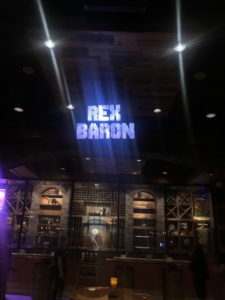
Rex Baron opened in Boca last week and it’s an experience.
Last week, we had a chance to attend the opening of “Rex Baron”, a new restaurant concept at the Town Center Mall.
Aside from getting to hang out with former Giants running back Rashad Jennings (he’s terrific and an investor in the business) which was cool, I can honestly say I’ve never seen a place quite like Rex Baron.
It’s an experiential restaurant with great food (and many healthy options) and a vast array of virtual reality experiences that allow you to experience everything from Jurassic Park and NASCAR to a post-apocalyptic Boca Raton. I think I’m decent with words, but I can’t quite describe the place. You have to see for yourself and you really must. It’s amazing.
Spread out over 8,200 square feet including beautiful outdoor space, a private room with a golf simulator and a magnificent bar/dining area Rex Baron is an exciting new concept.
We asked Mr. Jennings what attracted him to Rex Baron because we figured a former football star and “Dancing with the Stars” champ must be offered a slew of investment opportunities. While he was impressed with the VR component and the uniqueness of the design, he was really taken with the quality food options as someone who eats healthy but also fancies himself a chicken wing connoisseur.
“They are the best wings I’ve ever had,” said the LA based Jennings. “The best.”
By the time my friend Marisa Herman and I were done with Rashad, we had him considering a move to Boca and a job at the newspaper we run. He is after all a New York Times best-selling author who says he loves to write.
But I digress.
Let’s just say Rex Baron is a welcome and extremely unique addition to the Boca landscape.
The new restaurant is located near Nordstrom’s and Sachs adjacent to California Pizza Kitchen.
The opening of Rex Baron got me thinking about the marvel that is Town Center.
In a world where malls are closing or distressed, Town Center continues to thrive.
Why?
Because it evolves with the times. The mall still looks fresh and modern and feels vibrant and alive. It’s hard to imagine the mall will turn 40 in 2020.
They have added some great food options—including a soon to open French Bakery that is said to be out of this world.
It manages to stay busy year-round and seems to combine the perfect blend of shopping and dining.
Town Center’s tenants are also community focused hosting special events that benefit local charities.
I remember coming to Florida for a job interview in the 80s and visiting the mall. I was blown away way back then. Town Center was so much different than the drab northeast malls I was used too. It had palm trees, natural light, a strong retail mix and was the place to people watch.
Thirty years later it is still evolving and still relevant.
Rex Baron is the latest example.
Check it out…it’s spectacular.
Copyright © 2024 · Genesis Framework · WordPress · Log in